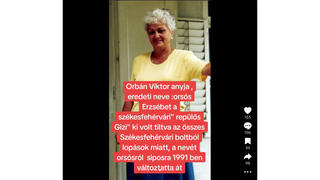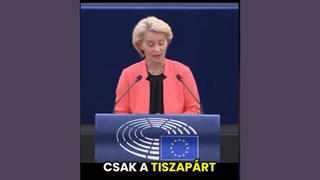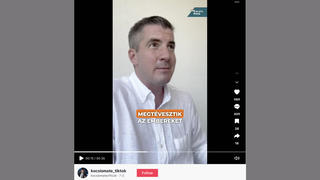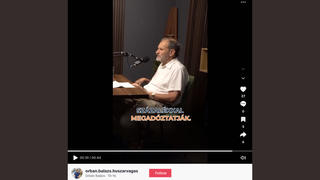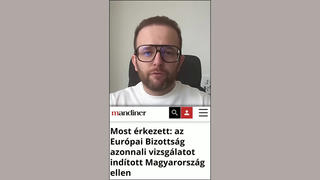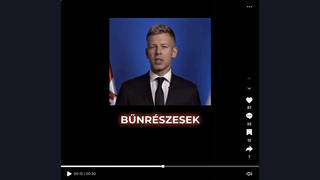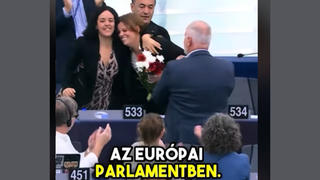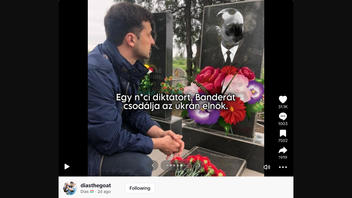
Did Ukrainian President Volodymyr Zelenskyy lay flowers at the grave of Stepan Bandera, Ukraine's "Nazi dictator" during World War II? No, that's not true: The photo in this claim is a doctored image of Zelenskyy visiting the grave of his grandfather. Moreover, Bandera was never Ukraine's dictator, and his headstone at a cemetery in Munich, Germany, does not resemble the one that appears in the picture.
The claim appeared in a Hungarian language video (archived here) on TikTok on August 14, 2023, under the heading, "Why do I support Russia against Ukraine? Let me show you ->" (All Hungarian translations by Lead Stories.) The text on the still photo of Zelenskyy read:
The Ukrainian president admiring a n*zi dictator, Bandera.
This is what the post looked like on TikTok at the time of writing:

(Source: TikTok screenshot taken on Wed Aug 16 08:04:08 2023 UTC)
The image of Bandera's face has been superimposed on a photo posted on Zelenskyy's official Facebook account on May 9, 2019, the day Ukrainians commemorate the Soviet Army's victory over Nazi Germany in World War II. The accompanying comment read:
Today I am at the grave of my grandfather, Semyon Ivanovich Zelenskyy. He went through the whole war and remains forever in my memory as one of those heroes who defended Ukraine from the Nazis... Thanks for the fact that the inhuman ideology of Nazism is forever a thing of the past. (Translation by Google Translate.)

(Source: Image download from Facebook.com on Wed Aug 16 09:07:17 2023 UTC)
In the altered image, Bandera's headshot is pasted onto the gravestone, as proven by the fact that parts of Semyon Zelenskyy's hair and face remain visible.
Bandera was a Ukrainian nationalist leader who struggled to liberate his country from both the Soviet Union and Poland in the 1930s and 40s, according to the Internet Encyclopedia of Ukraine (IEU), a site overseen by scholars in Canada. Bandera courted German support for Ukrainian independence, but never held formal political office and never became a "Nazi dictator," according to the IEU's information.
Bandera and his comrades declared Ukrainian statehood on June 30, 1941, the day the German military rolled into the city of Lviv, then part of Poland, according to Encyclopedia Britannica. However, the Nazis opposed Bandera's aspirations and promptly had him arrested; he spent the next three years in prison and concentration camps, the IEU says.
After the war, Bandera immigrated to Germany, where he was assassinated by a KGB agent in 1959, the IEU writes. His gravestone at the Waldfriedhof Cemetery in Munich looks nothing like the one that appears in the TikTok.
 (Source: Image download from Wikimedia Commons on Wed Aug 16 10:40:10 2023 UTC)
(Source: Image download from Wikimedia Commons on Wed Aug 16 10:40:10 2023 UTC)
Despite his pro-German proclivities, Bandera is revered by many Ukrainian soldiers fighting against Russian invaders in 2023. They commemorate him in a popular patriotic song titled "Bandera is our father, Ukraine is our mother."


